Related Research Articles

The Metropolitan Museum of Art of New York City, colloquially "the Met", is the largest art museum in the United States. With 6,953,927 visitors to its three locations in 2018, it was the third most visited art museum in the world. Its permanent collection contains over two million works, divided among 17 curatorial departments. The main building at 1000 Fifth Avenue, along the Museum Mile on the eastern edge of Central Park in Manhattan's Upper East Side, is by area one of the world's largest art galleries. A much smaller second location, The Cloisters at Fort Tryon Park in Upper Manhattan, contains an extensive collection of art, architecture, and artifacts from medieval Europe. On March 18, 2016, the museum opened the Met Breuer museum along Madison Avenue on the Upper East Side; it extends the museum's modern and contemporary art program.
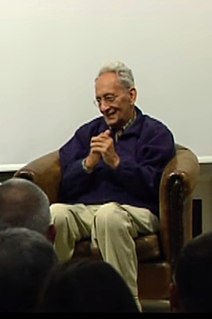
Frank Philip Stella is an American painter, sculptor and printmaker, noted for his work in the areas of minimalism and post-painterly abstraction. Stella lives and works in New York City.

The New-York Historical Society is an American history museum and library located in New York City at the corner of 77th Street and Central Park West on the Upper West Side of Manhattan. The society was founded in 1804 as New York's first museum. It presents exhibitions, public programs, and research that explore the rich history of New York and the nation.

The Speed Art Museum, originally known as the J.B. Speed Memorial Museum, now colloquially referred to as the Speed by locals, is the oldest, largest, and foremost museum of art in Kentucky. It is located in Louisville, Kentucky on Third Street next to the University of Louisville Belknap campus and receives around 180,000 visits annually.
Leonard Alan Lauder is an American billionaire businessman and art collector.

Carnegie Museums of Pittsburgh are four museums that are operated by the Carnegie Institute headquartered in the Carnegie Institute complex in the Oakland neighborhood of Pittsburgh, Pennsylvania. The Carnegie Institute complex that includes the original museum, recital hall, and library was added to the National Register of Historic Places on March 30, 1979.
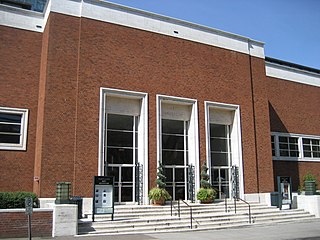
The Portland Art Museum in Portland, Oregon, United States, was founded in 1892, making it the oldest art museum on the West Coast and seventh oldest in the US. Upon completion of the most recent renovations, the Portland Art Museum became one of the 25 largest art museums in the US, at a total of 240,000 square feet, with more than 112,000 square feet of gallery space. The permanent collection has more than 42,000 works of art, and at least one major traveling exhibition is usually on show. The Portland Art Museum features a center for Native American art, a center for Northwest art, a center for modern and contemporary art, permanent exhibitions of Asian art, and an outdoor public sculpture garden. The Northwest Film Center is also a component of Portland Art Museum.

The Virginia Museum of Fine Arts, or VMFA, is an art museum in Richmond, Virginia, in the United States, which opened in 1936.
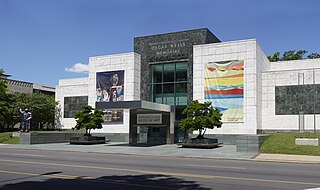
Founded in 1951, the Birmingham Museum of Art in Birmingham, Alabama, today has one of the finest collections in the Southeastern United States, with more than 24,000 paintings, sculptures, prints, drawings, and decorative arts representing a numerous diverse cultures, including Asian, European, American, African, Pre-Columbian, and Native American. Among other highlights, the Museum’s collection of Asian art is considered the finest and most comprehensive in the Southeast, and its Vietnamese ceramics one of the finest in the U.S. The Museum also is home to a remarkable Kress Collection of Renaissance and Baroque paintings, sculpture, and decorative arts from the late 13th century to c.1750, and the 18th-century European decorative arts include superior examples of English ceramics and French furniture.

The Museum of Fine Arts, Houston (MFAH), located in the Houston Museum District, Houston, is one of the largest museums in the United States. The permanent collection of the museum spans more than 6,000 years of history with approximately 64,000 works from six continents.
Henry Geldzahler was a Belgian-born American curator of contemporary art in the late 20th century, as well as a historian and critic of modern art. He is best known for his work at the Metropolitan Museum of Art and as New York City Commissioner of Cultural Affairs, and for his social role in the art world with a close relationship with contemporary artists.
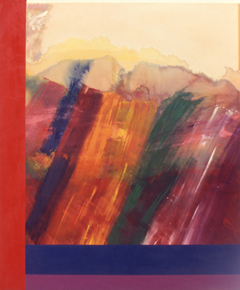
Ronnie Landfield is an American abstract painter. During his early career from the mid-1960s through the 1970s his paintings were associated with Lyrical Abstraction,, and he was represented by the David Whitney Gallery and the André Emmerich Gallery.

The New Orleans Museum of Art is the oldest fine arts museum in the city of New Orleans. It is situated within City Park, a short distance from the intersection of Carrollton Avenue and Esplanade Avenue, and near the terminus of the "Canal Street - City Park" streetcar line. It was established in 1911 as the Delgado Museum of Art.
James Edward Grant was a painter and sculptor active from the late 1950s into the early 1970s. Best known for his sculptural work in plastics, this work by no means defined him, but was rather a natural endpoint of an exploration into increased dimensionality—starting from abstract canvases, moving through collages and bas-reliefs until the work finally came off the wall in sculptural form.
Anne d'Harnoncourt was an American curator, museum director, and art historian specializing in modern art. She was the director and CEO of the Philadelphia Museum of Art (PMA), a post she held from 1982 until her sudden death in 2008. She was also an expert scholar on the works of French artist Marcel Duchamp.

Henry Pearlman (1895–1974) was a Brooklyn-born, self-made businessman who discovered in midlife a passion for impressionist and post-impressionist art. Over three postwar decades, he assembled a "deeply personal" collection centered on thirty-three works by Paul Cézanne and more than forty by Vincent van Gogh, Amedeo Modigliani, Chaïm Soutine, Paul Gauguin, Édouard Manet, Henri de Toulouse-Lautrec and a dozen other European modernists. His eye for quality was "rarely matched in a private collection."
Janice H. Levin (1913–2001) was an American businesswoman and philanthropist and art collector from New York City. She was a patron of the ballet and collected mostly French impressionist paintings. She was a supporter of higher education as well as charities in Israel. She donated many of her paintings to museums.

Portrait of Mrs. Bodolphe is a painting by the Dutch Golden Age painter Frans Hals, painted in 1643 as half of a pair of pendant marriage portraits and is still together with its pendant in the Yale University Art Gallery, New Haven, Connecticut.
Alfrederick Smith Hatch was an American investment banker who founded Fisk & Hatch along with Harvey Fisk. Hatch was the President of the New York Stock Exchange from 1883 to 1884.
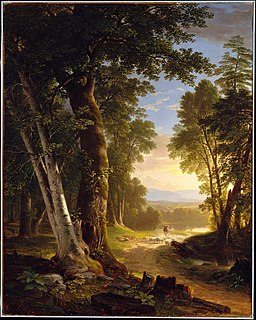
The Beeches is a mid 19th-century painting by American artist Asher Brown Durand. Done in oil on canvas, the work depicts a forested path in the Northeastern United States. Beeches has been described as one of Durand's earlier works of Naturalist art.
References
- 1 2 3 Linda Sipress, The History of the Centennial of The Metropolitan Museum of Art. New York: Metropolitan Museum of Art, (1972).
- 1 2 3 4 5 Finding aid for the George Trescher records related to The Metropolitan Museum of Art Centennial, 1949, 1960-1971 (bulk 1967-1970). The Metropolitan Museum of Art. Retrieved 1 August 2014.
- ↑ Metropolitan Museum opens first major centennial exhibition "New York Painting and Sculpture: 1940–1970". Digital Collections, The Metropolitan Museum of Art Libraries. Retrieved 1 August 2014.
- ↑ Various – Centennial Fanfares: The Metropolitan Museum Of Art 1870-1970. Discogs.
- ↑ Metropolitan Museum gives free year-long art history course in celebration of Centennial. Digital Collections, The Metropolitan Museum of Art Archives. Retrieved 1 August 2014.